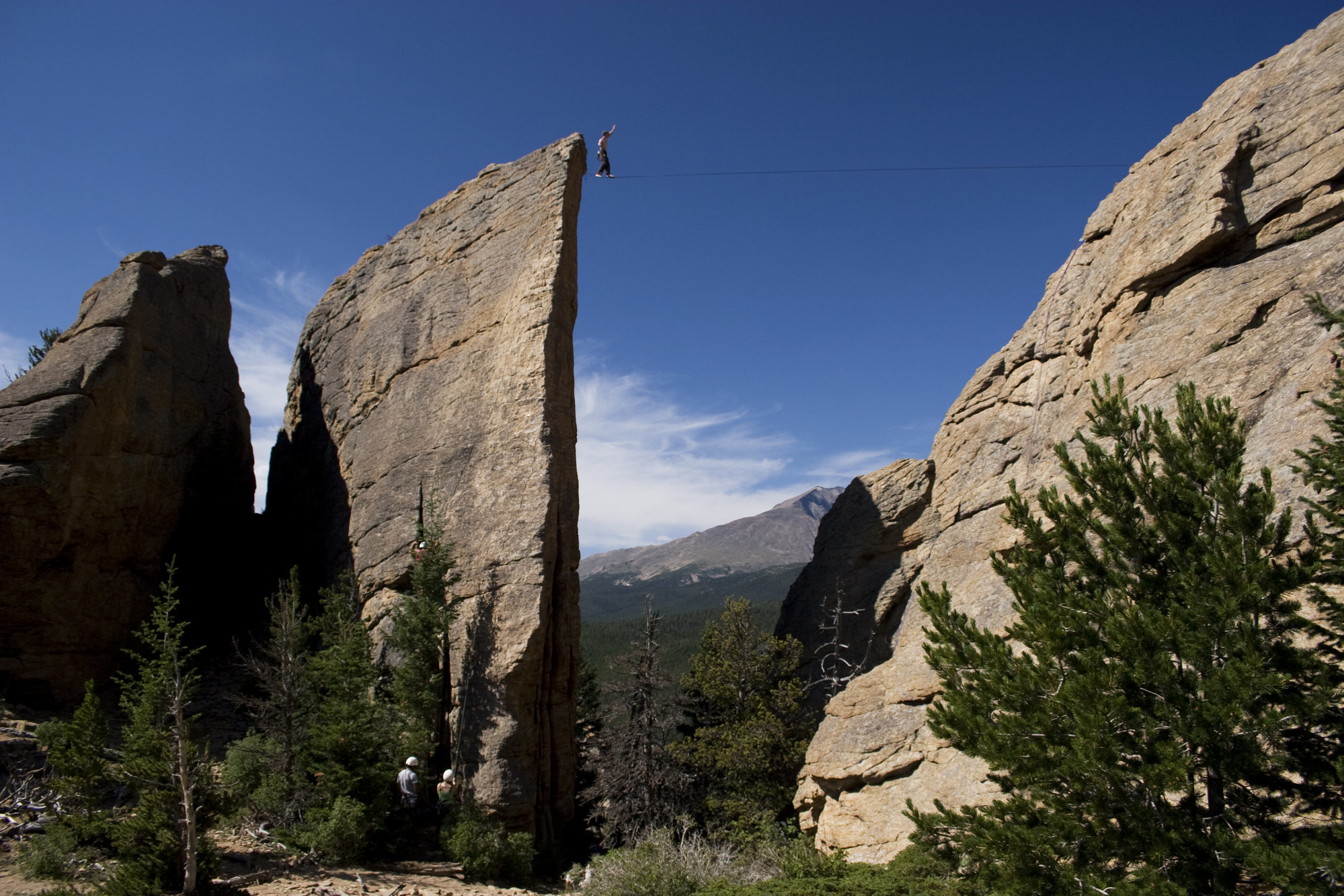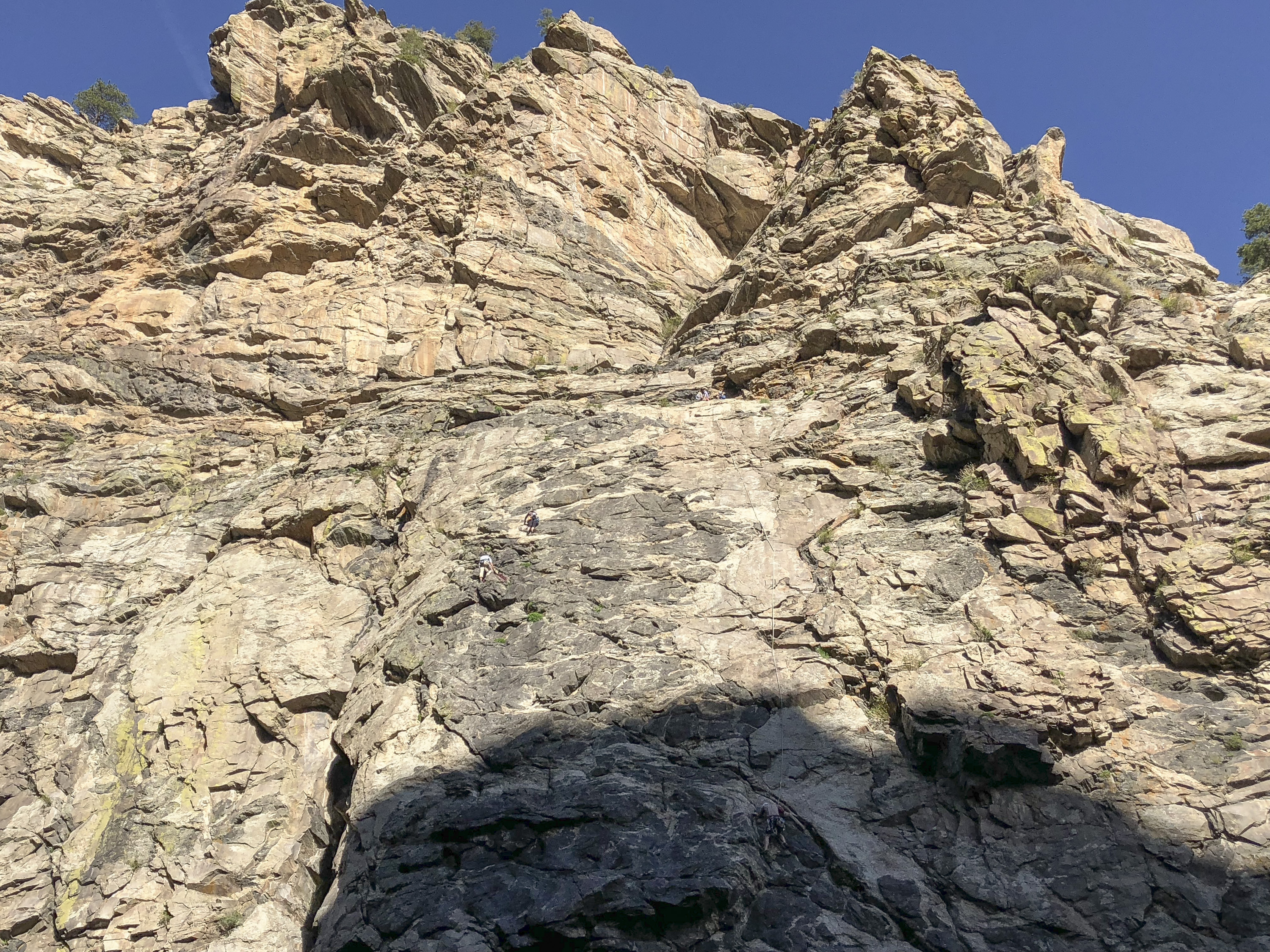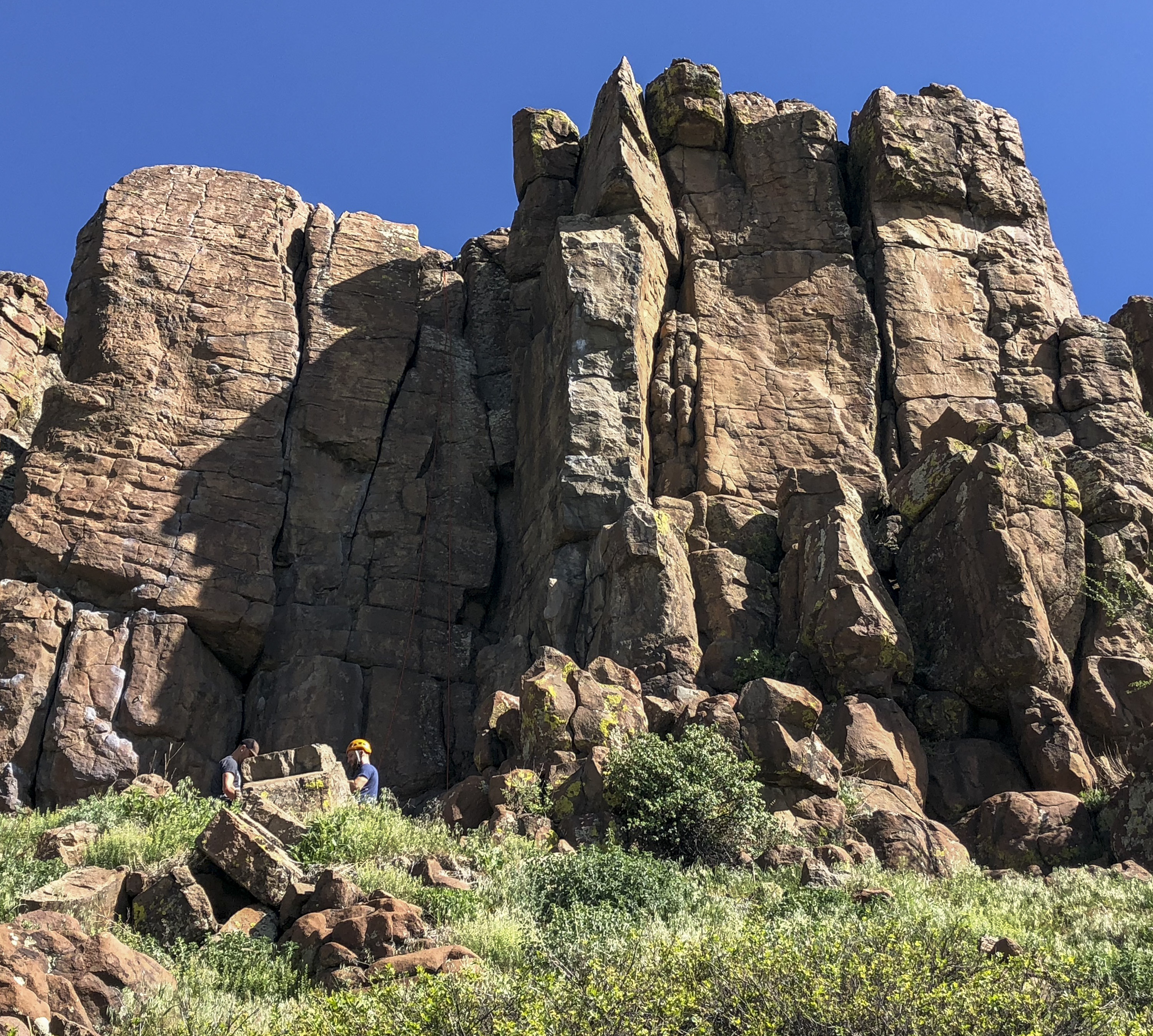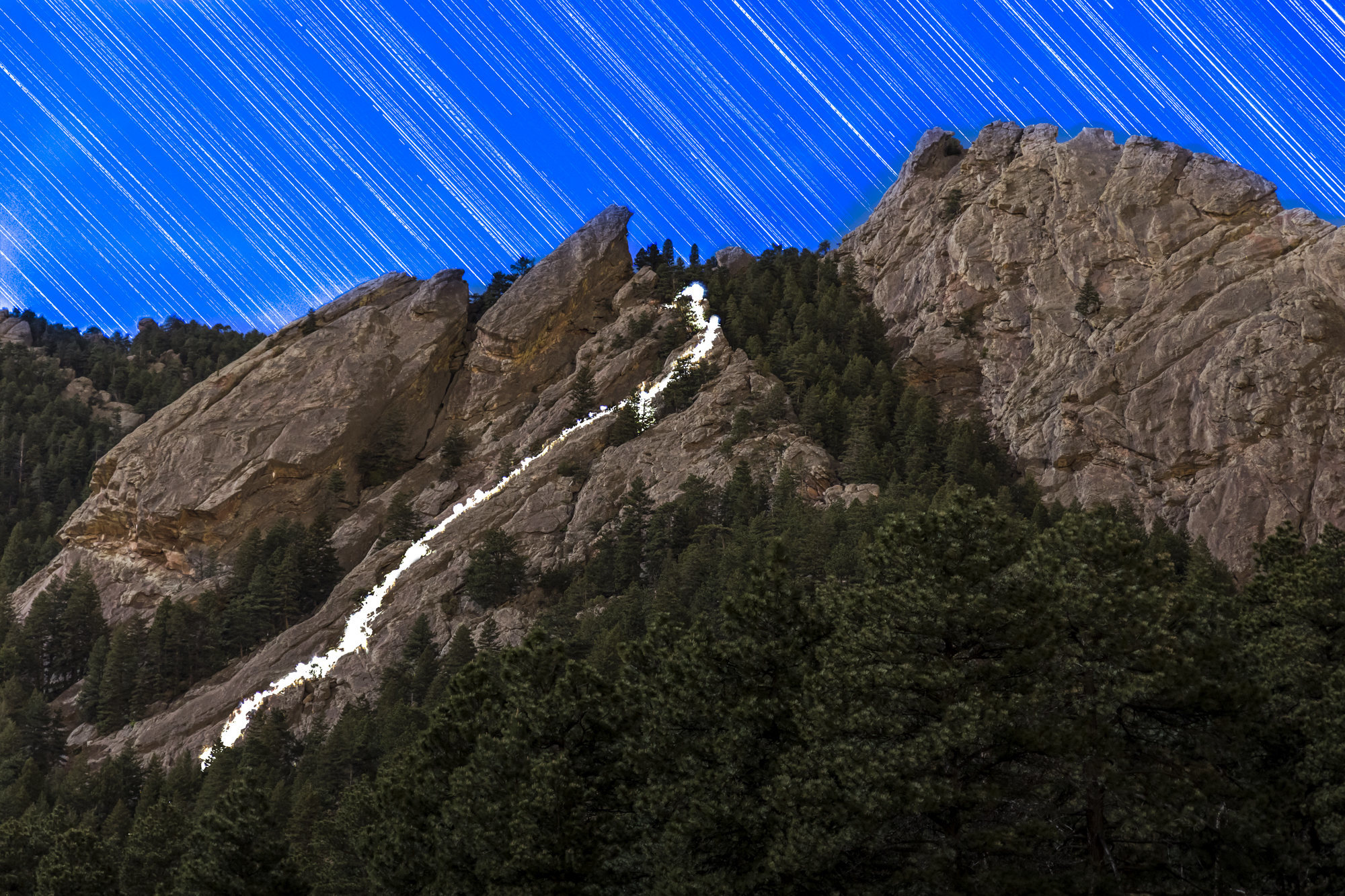With over 15 individual mountain ranges that are home to 10s of thousands of mountains, Colorado is a rock climber’s dream.
You don’t have to travel far from Denver to experience a variety of world-class climbing routes, and if you’re a beginner or are in the process of honing your skills as an intermediate climber, there are thousands of rock climbing routes nearby that are perfect to build your confidence on the wall.
Since the 1950s, rock climbing routes get rated on a numeric scale to dictate their difficulty. Classes 1-4 don’t require technical climbing—they only require some scrambling (a walk up steep terrain using your hands for support), and a rope is not usually needed. Once you reach a class 5, the technical climbing begins where a three-point-stance (either two of your feet and one hand or two of your hands and one foot make contact with the rock) is required. Beginner climbing tapers off around a class 5.7, and intermediate climbing does so around 5.9. For purposes of this article, the routes included do not exceed a 5.9 rating.
While there is almost an endless amount of rock climbing that can be done in Colorado, two local climbers, Matt Nero and Gno Verucchi, offered some direction for those looking for good beginner/intermediate climbing routes near Denver. It should be noted that there is a mixed consensus about whether outdoor routes are more difficult than their indoor counterparts. Nero, who only climbed indoors before he moved to Colorado, said that the major difference between climbing indoors and outdoors was getting used to feeling real rock and understanding that the holds are different. And while some gyms “soften” their route ratings to make their patrons feel better about their progress, most indoor routes translate well to climbing outdoors.
The routes listed below are a mix of sport, trad (traditional) and top-rope climbing and are listed in descending order based on their difficulty. To clarify, sport climbing is when a climber uses fixed anchors and bolts on the rock which eliminates the need for them to place their own safety equipment as they climb. Guided by their rope, they can follow the line of bolts up the wall with minimal risk. Trad climbing is the opposite, where the climber has to place and remove protection gear as they move up the route. Lastly, top-roping is where the rope that the climber is attached to is anchored into the top of the route and fed through the climber’s harness. This is the most common form of climbing on indoor walls and is a great way for people who are new to climbing outdoors to practice.
Note: This is not a complete guide. Make sure you have a detailed plan and enough experience before attempting any of these routes. Detailed information and route-planning tips can be found here.
Edge of Time

Location: Estes Park Valley
Rating: 5.9
Climb Type: Sport/Top-Rope
The Lowdown: This might be the most scenic climb in Estes Park. The route is protected by four bolts and a pin, and it can be top-roped. This is a spectacular sport climb for experienced intermediate climbers.
The Memory of Trees

Location: Boulder – Boulder Canyon
Rating: 5.9
Climb Type: Sport
The Lowdown: This route is the favorite sport route in Boulder Canyon by many Boulder locals. It’s a nine-bolt route with a two-bolt anchor, and you’ll need a 60-meter rope for the rappel. This route is great for experienced intermediate climbers who are looking to practice their roof-climbing skills.
Mr. Mistoffeles

Location: Golden – Clear Creek Canyon
Rating: 5.9
Climb Type: Sport
The Lowdown: This is a great slab-climbing route for intermediate climbers. The route is protected by 12 bolts with a two bolt anchor. For a climber who wants to practice their first lead, this is a great place to start.
Playin’ Hooky

Location: Golden – Clear Creek Canyon
Rating: 5.8
Climb Type: Sport
The Lowdown: This is a long, two-pitch route on the creek side of Clear Creek Canyon. The route is well protected with an abundance of bolts. It’s become a more popular route in recent years, so it’s advised to avoid going on the weekend to beat the crowds.
Edges and Ledges

Location: Boulder – Boulder Canyon
Rating: 5.8
Climb Type: Sport
The Lowdown: This is a well-bolted route that is the perfect lead for someone who is just breaching 5.8 sport climbs. Make sure you stay on the slab to the right as the gully on the left of the route is full of loose rock. The route is relatively new, as the first ascent didn’t happen until 2006.
The Bastille Crack

Location: Boulder – Eldorado Canyon
Rating: 5.7
Climb Type: Trad – Five pitches
The Lowdown: This is “one of the most classic climbs in the country,” according to Mountain Project. For that reason, this is one of the more crowded climbs in the state. Going on weekdays is recommended to avoid the crowds. Also, this route is in the shade until mid-afternoon, so if the weather is not warm, this could be an unpleasantly-cold climb.
North Ridge

Location: Colorado Springs – Garden of the Gods
Rating: 5.7
Climb Type: Trad – Two pitches
The Lowdown: The Mountain Project claims this mountain is “one of the best 5.7 climbs in Colorado,” and locals would agree. It climbs up the North ridge of Montezuma’s Tower in the famous Garden of the Gods in Colorado Springs. Usually done in two pitches, this conglomerate sandstone tower is exposed and requires two ropes for the rappell.
Corner Climb

Location: Fort Collins – Horsetooth Reservoir
Rating: 5.7
Climb Type: Trad/Top-rope
The Lowdown: This is a great route for beginners who are learning proper crack climbing technique. Stay to the left of the roof, and don’t let your guard down as the last moves at the top are the most difficult moves of the climb. Because this route is top-roped, its a great intermediate level climb for beginners.
Killian’s Dead

Location: Golden – North Table Mountain
Rating: 5.6
Climb Type: Trad/Top-Rope
The Lowdown: This is another good route for beginner climbers who want to hone their crack-climbing skills as there are an abundance of hand jams. The top-rope also makes this a fun beginner route.
Northeast Ridge

Location: Rocky Mountain National Park – Sharkstooth
Rating: 5.6
Climb Type: Trad – Five pitches
The Lowdown: From the Andrew’s Glacier trail, you can’t miss the Sharkstooth that pierces the sky. This is a popular favorite among local climbers in Boulder even though it can get crowded. The route has some loose rock to be aware of, so definitely test every handhold before you commit to them.
Cowboy Boot Crack

Location: Colorado Springs – Garden of the Gods
Rating: 5.6
Climb Type: Trad/Top-rope
The Lowdown: Protected by a two bolt anchor, this route is great for beginners who are learning how to lead climbs. The route is well-defined and is rather easy to setup a nice top-rope. You’ll be wanting more after climbing this rather short route.
Solo Slab

Location: Pagosa Springs
Rating: 5.5
Climb Type: Top-rope
The Lowdown: This is the perfect climb for new climbers and youth climbers alike. Even though it’s not techinically near Denver, it’s a great slab for practicing your friction skills (for an added challenge, tape tennis balls to your hands so they only act as balancing points).
East Face (Standard)

Location: Boulder – Third Flatiron
Rating: 5.4
Climb Type: Trad – Eight pitches
The Lowdown: To quote the famous mountaineer Kel Rossiter, “This is probably the best beginner climb in the solar system.” With nearly every stance being a resting point, it’s easy to regroup and find the fixed eye-bolts. At night during the summer, you can sometimes see a trail of headlamps leading up this route due to its popularity. This route does not require much technical climbing.
Wham Ridge

Location: San Juans – Vestal Peak
Rating: 5.4
Climb Type: Trad – Ten pitches
The Lowdown: Wham Ridge is a great first multi-pitch trad route for beginner and intermediate climbers. The long runouts are comfortable, and the route features some class 4 moves. The route is distinguished and is easy to follow. This should be on every beginner and intermediate climber’s to-do list.
East Face North Side

Location: Boulder – First Flatiron
Rating: 5.3
Climb Type: Trad – Five pitches
The Lowdown: This route is quite technical. It’s a great climb for beginners who are just on the verge of entering the class of intermediate climbers. Many people practice their free-soloing on this route, but be aware that multiple people have died doing so in the past years. Climbers should be very cautious not to use a rope.
Angel’s Way

Location: Boulder – Flatirons
Rating: 5.2
Climb Type: Trad – Eight pitches
The Lowdown: Considered one of the best flatiron climbs by many locals in Boulder, this route is perfect for beginner climbers with little-to-no climbing experience. It’s a long climb that’s mostly a scramble, and its difficulty can be compared to that of the East face of the third flatiron. This route is usually closed from February 1 to July 31.
Freeway

Location: Boulder – Second Flatiron
Rating: 5.0
Climb Type: Trad – Six pitches
The Lowdown: This is one of the best beginner routes in the state. It’s not that popular of a route so it hardly is congested with climbers. Intermediate climbers can ascend this route without a rope, but it’s advised that beginner climbers use one. The route starts at the foot of a trail and tops-out at another trail making it one of the easiest routes in the Flatirons to access.






Great stuff guys! Would love to pick your brain a bit..